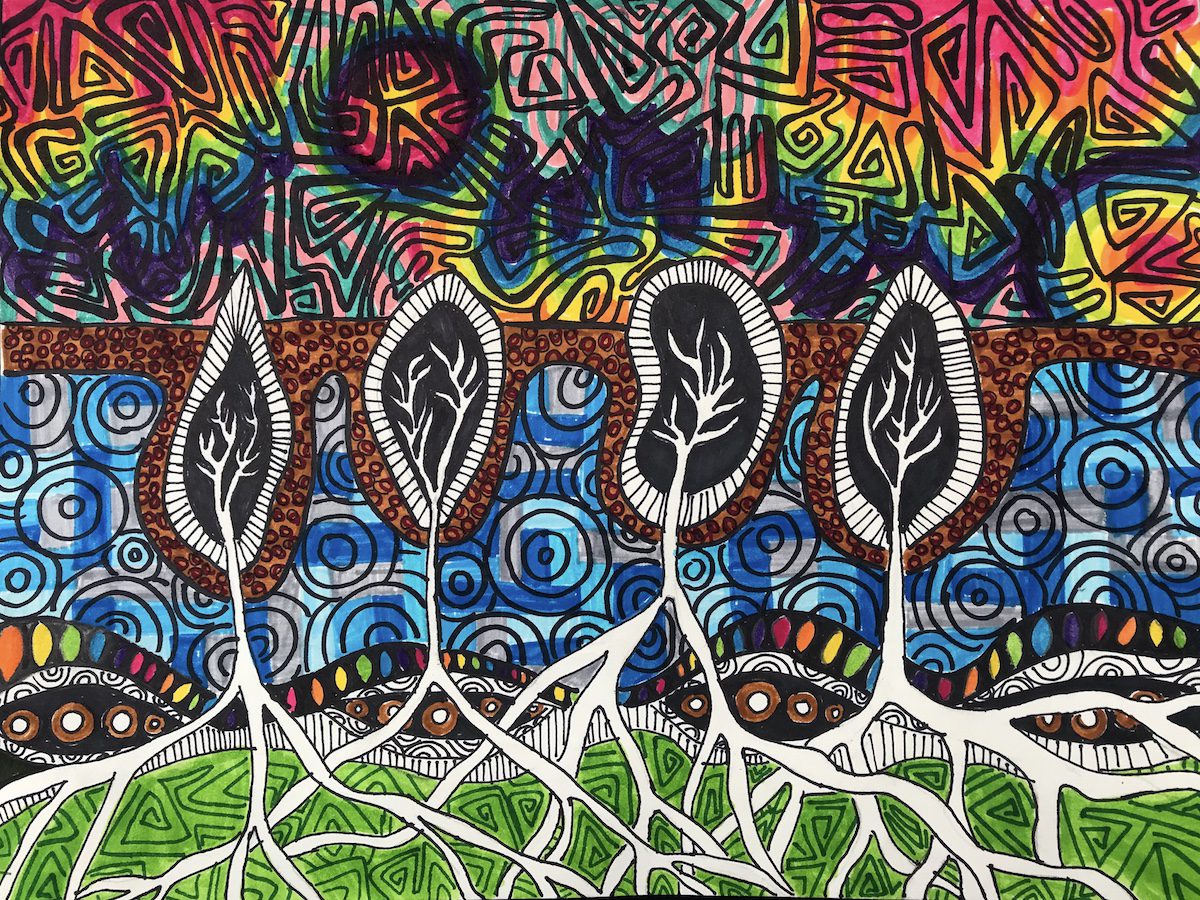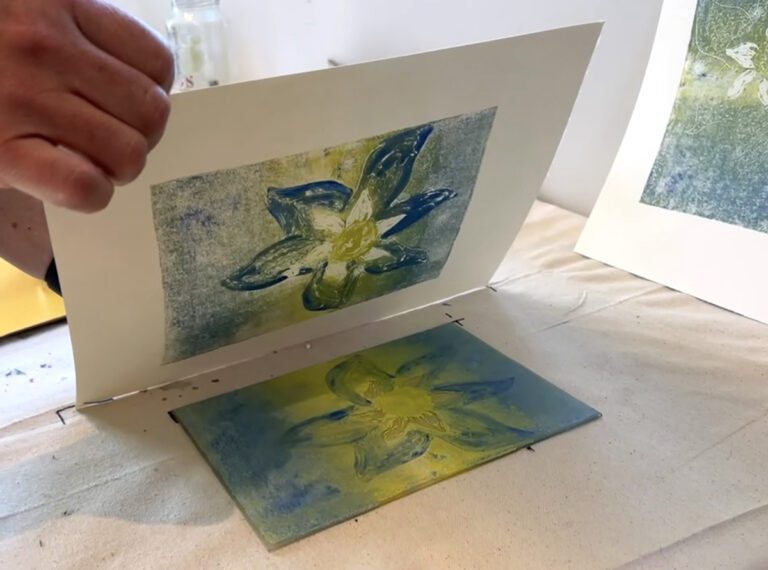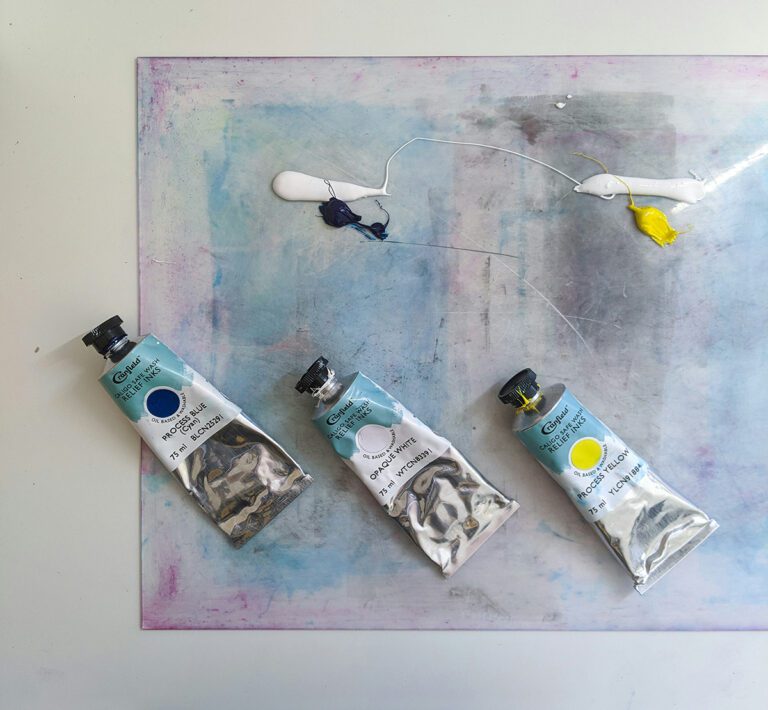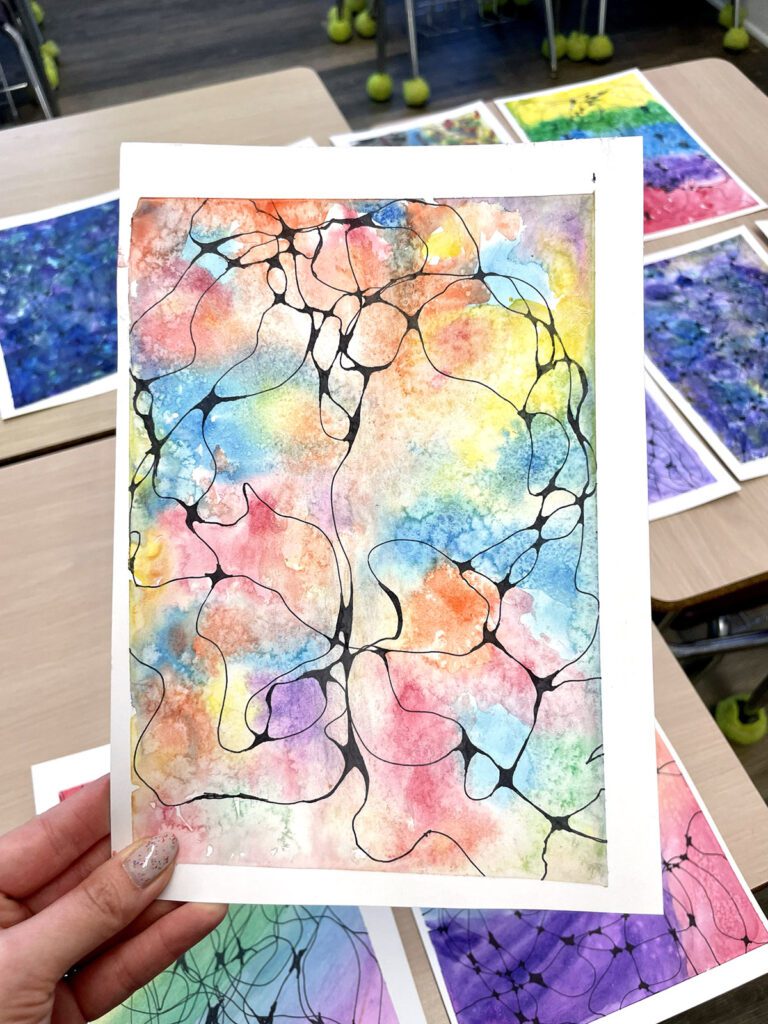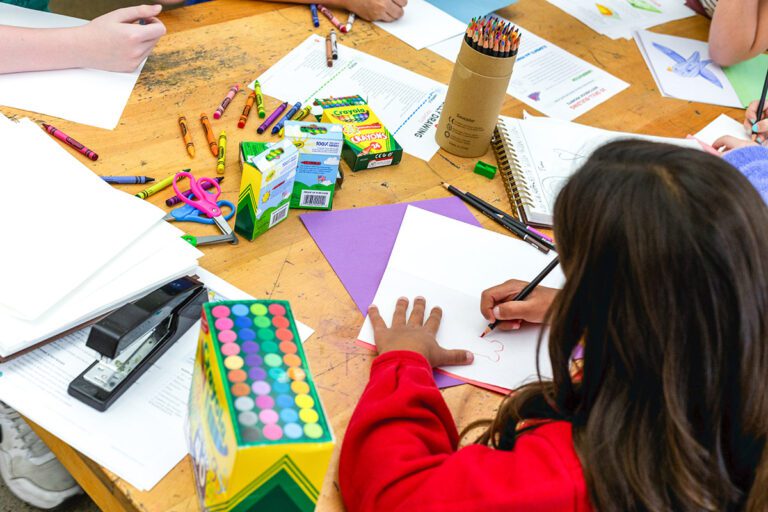Drawing is a fundamental part of the artmaking process. It’s even proven to aid in child development. But, while drawing may be basic, it certainly isn’t easy.
When you ask students what they want to be able to do in art class, many will say, “draw realistically.” What students don’t realize is the amount of work and effort that goes into mastering this skill set. Furthermore, if you dive into traditional materials and methods, the intensity can make students reluctant to practice. The trick is to hook students with exciting experiences.
Check out these 4 ways you can liven up your drawing curriculum right now!
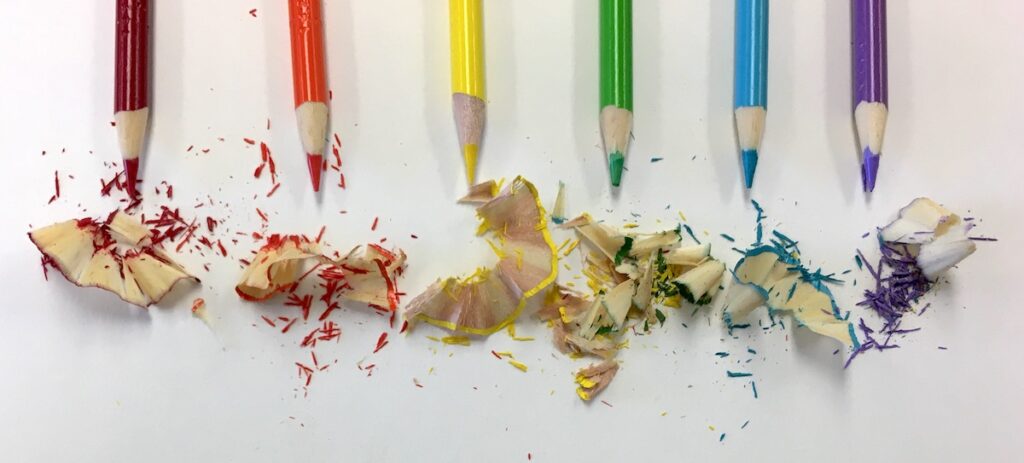
1. Use Non-Traditional Materials
For many students, traditional drawing materials, like graphite and colored pencils, just aren’t that exciting. Students don’t know how to properly use them or don’t want to take the time to use them correctly. Craftsmanship goes out the window, and the work ends up sloppy or unfinished.
Instead, try starting a drawing unit with a non-traditional material, like paint.
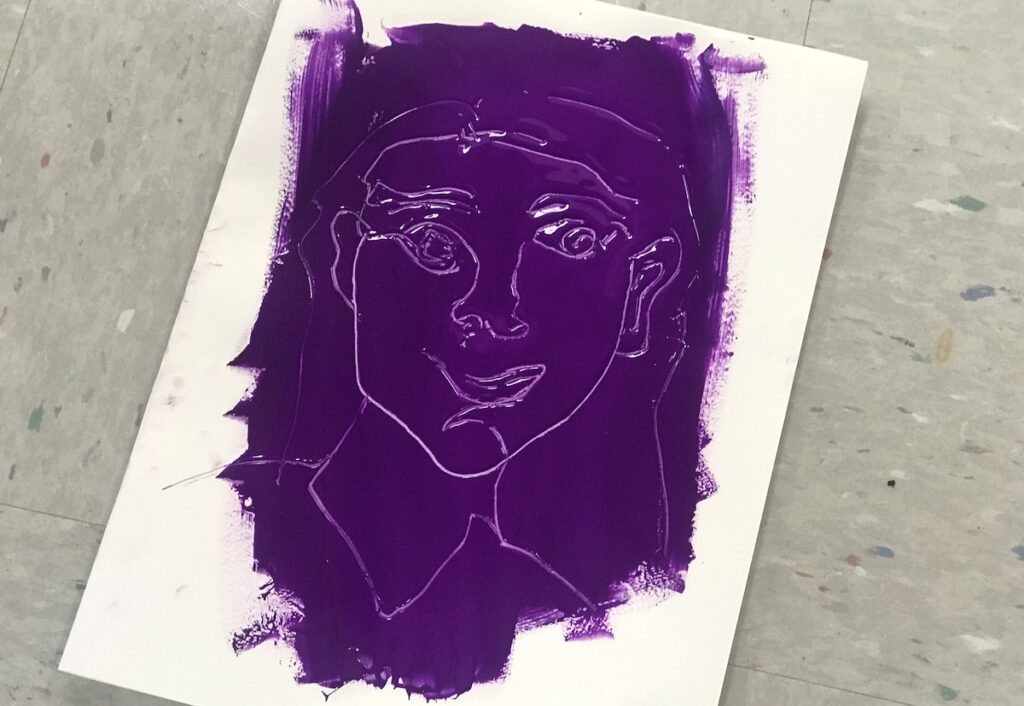
Here’s one example.
Blind contour drawing is a great first activity to get students thinking about observational drawing. But, is it necessary for them to use pencils or markers?
What if students smeared paint onto their papers and then drew into it with the back of their paintbrush? This method will not only yield some remarkable results but teach blind contour drawing in a new way.
2. Use Traditional Materials in New Ways
It’s easy to get caught up in the fun of using fancy materials. But, they can be hard on your budget and inappropriate for some grade levels. If you don’t have the budget for your favorite Ebony Pencils or Prismacolors this year, take it back to the basics!
For example, markers aren’t often used to their full potential, but can yield some fantastic results! Have your students experiment with different types of markers to see what cool effects they can come up with.
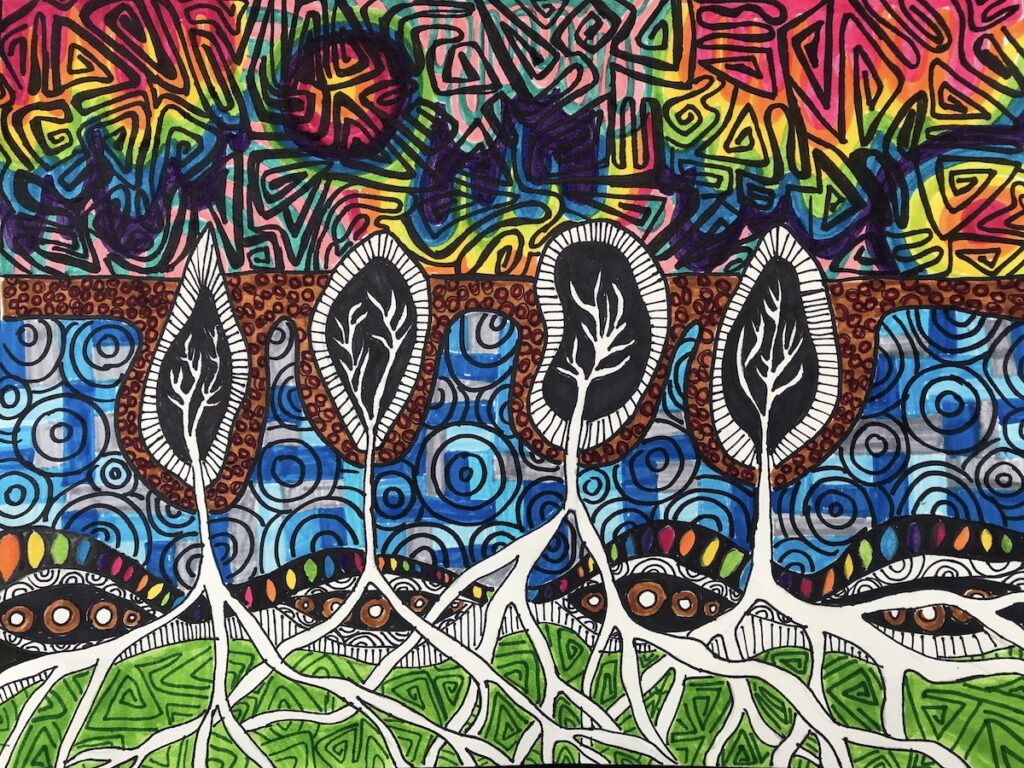
For instance, using a combination of drawing pencils with highlighter on top can create an impressive result. Or, have you ever used water with your markers to create a watercolor effect? Let your students play around to discover how a simple material can create impressive effects.
Tim also talks about this idea in the Rethinking Your Drawing Curriculum PRO Learning Pack. There’s an entire section about challenging your students where he discusses using traditional materials in new ways. Don’t miss it!
3. Utilize Technology
Using technology is an easy way to liven up your drawing curriculum. Students are often less intimidated and more apt to take risks with digital media. This is because they can work quickly and fix errors easily. If you have access to tablets, find a basic drawing app and let your students go!
All of these apps have worked well for my students.
- Adobe Illustrator Draw
- Autodesk SketchBook
- Procreate (only available on iOS)
Or, the next time you have the opportunity, try having your students create a gridded drawing digitally and traditionally. It’s interesting to see how the results differ.
Another fun way to merge technology and drawing is by using 3-D pens. 3-D pens require students to draw lines to create a 3-D form. It’s a wonderful visualization for how 2-D and 3-D elements relate.
4. Incorporate Calligraphy
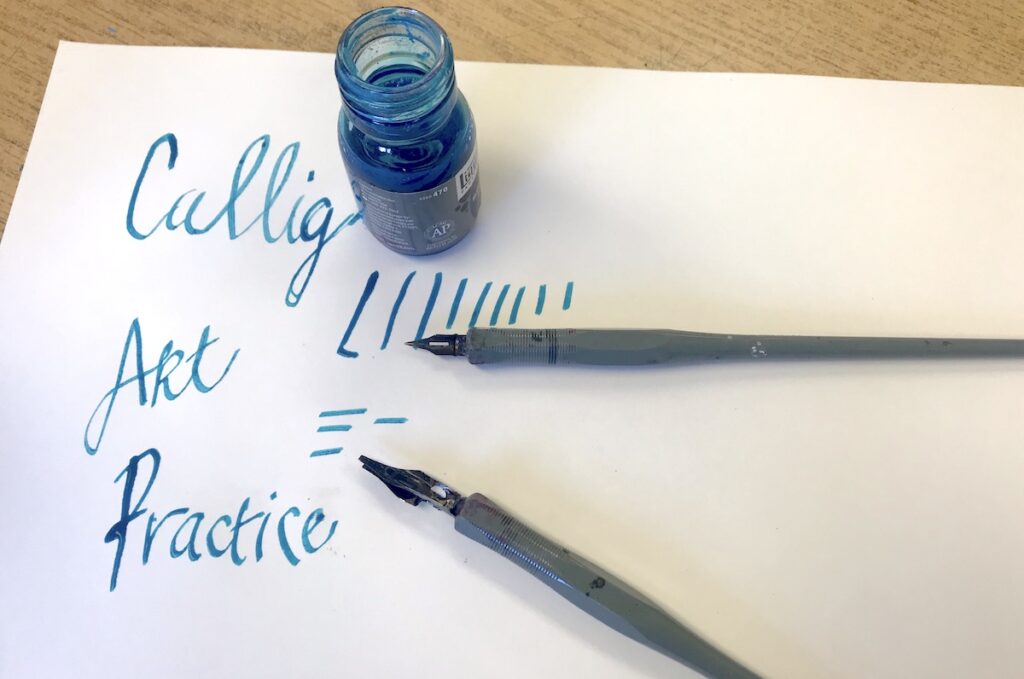
We all know handwriting is becoming a lost art. However, we can bring back this skill by teaching mark-making and line quality through calligraphy. There are a variety of wonderful markers that can be used for hand lettering. Tombow has many excellent choices.
That said, there’s nothing more exciting for students than using traditional calligraphy pens with nibs and ink to create. It will likely be a new material for them, which will create instant buy in. Plus, when the nib inevitably creates an unwanted splatter, students will be motivated to learn how to make the best of it.
Drawing does not need to be boring. There are so many exciting ways we can address this fundamental skill with our students. With a little creativity and carefully chosen materials, students can love to draw again!
What is your favorite way to teach drawing?
How do you get your students excited about drawing?
Magazine articles and podcasts are opinions of professional education contributors and do not necessarily represent the position of the Art of Education University (AOEU) or its academic offerings. Contributors use terms in the way they are most often talked about in the scope of their educational experiences.
